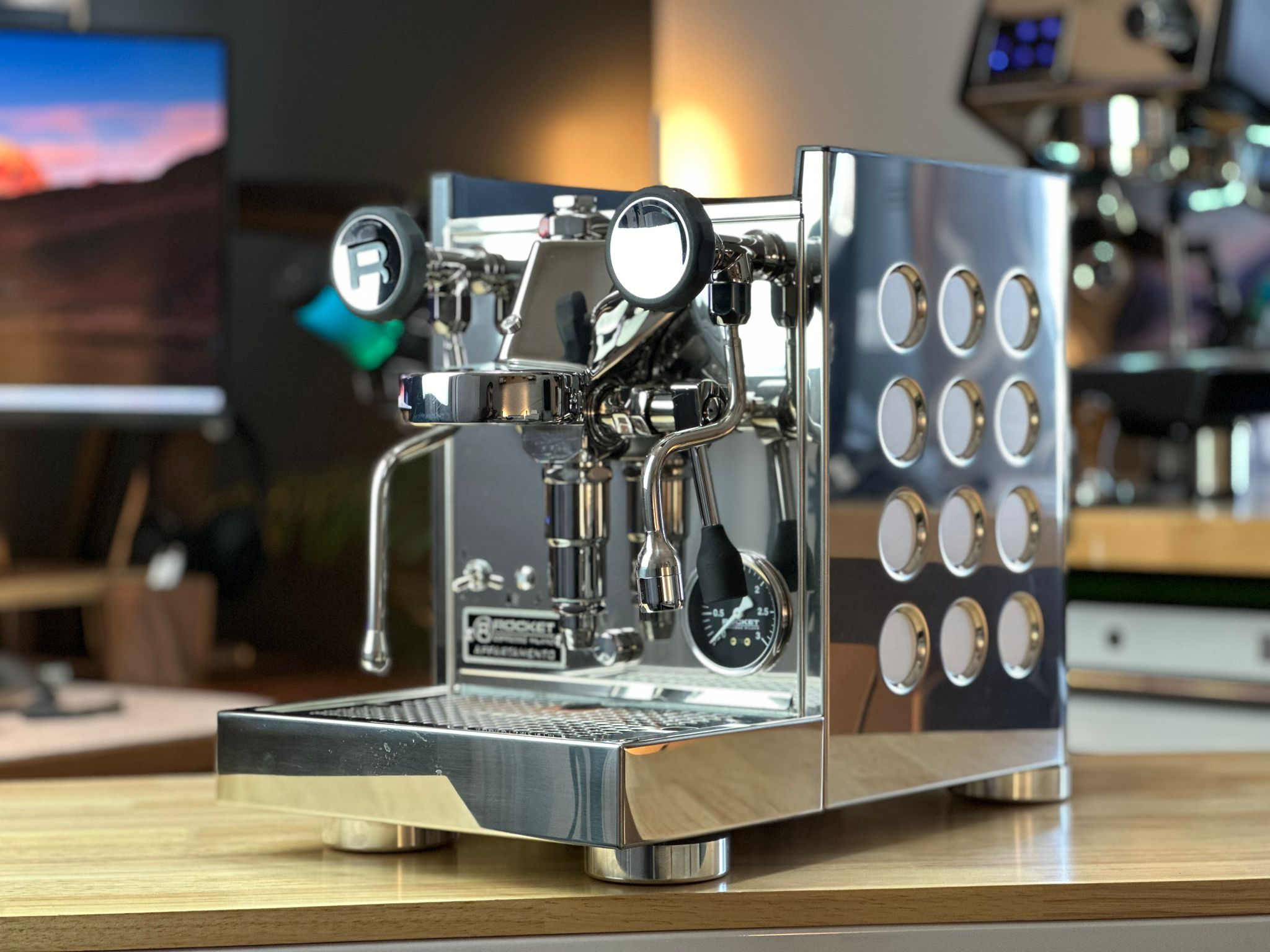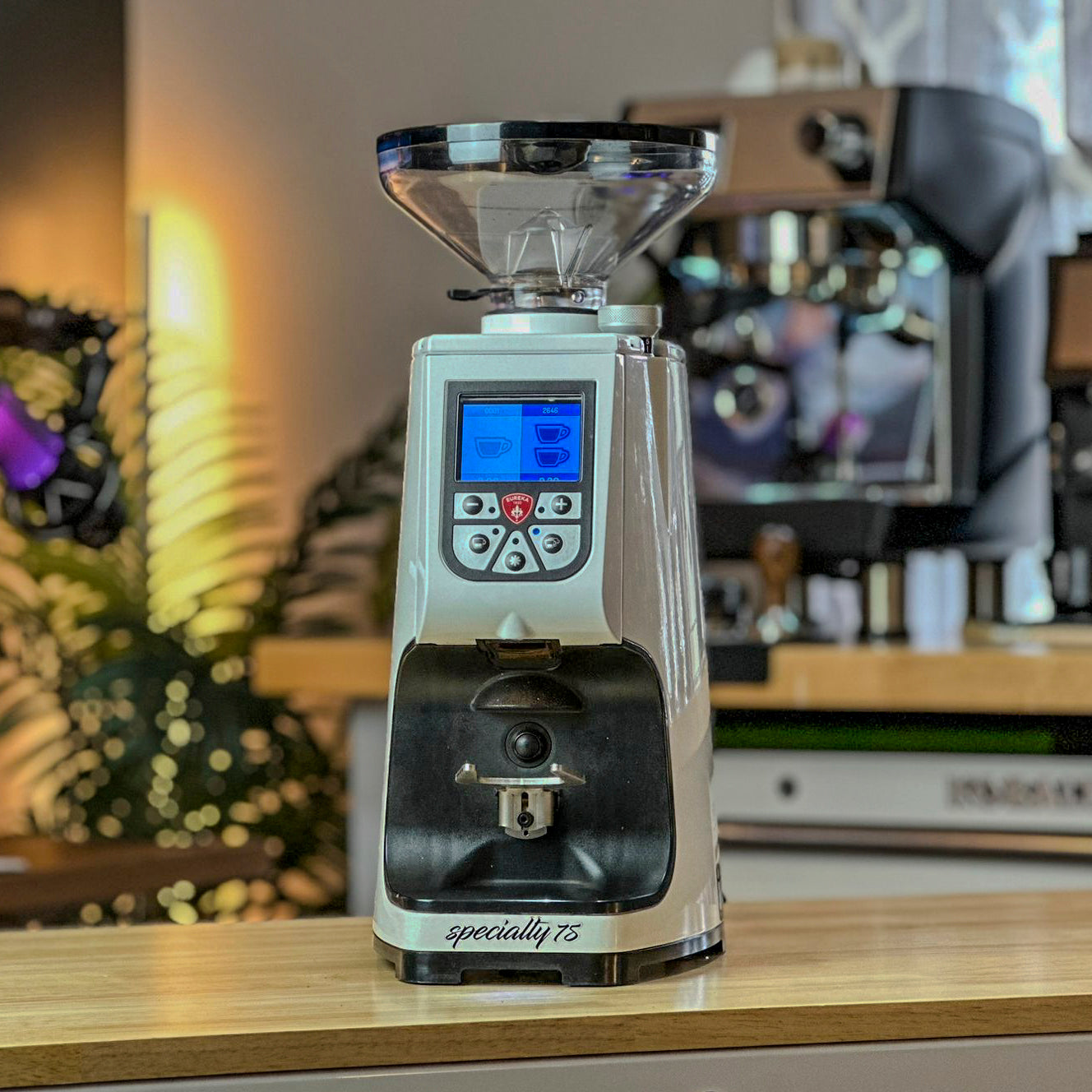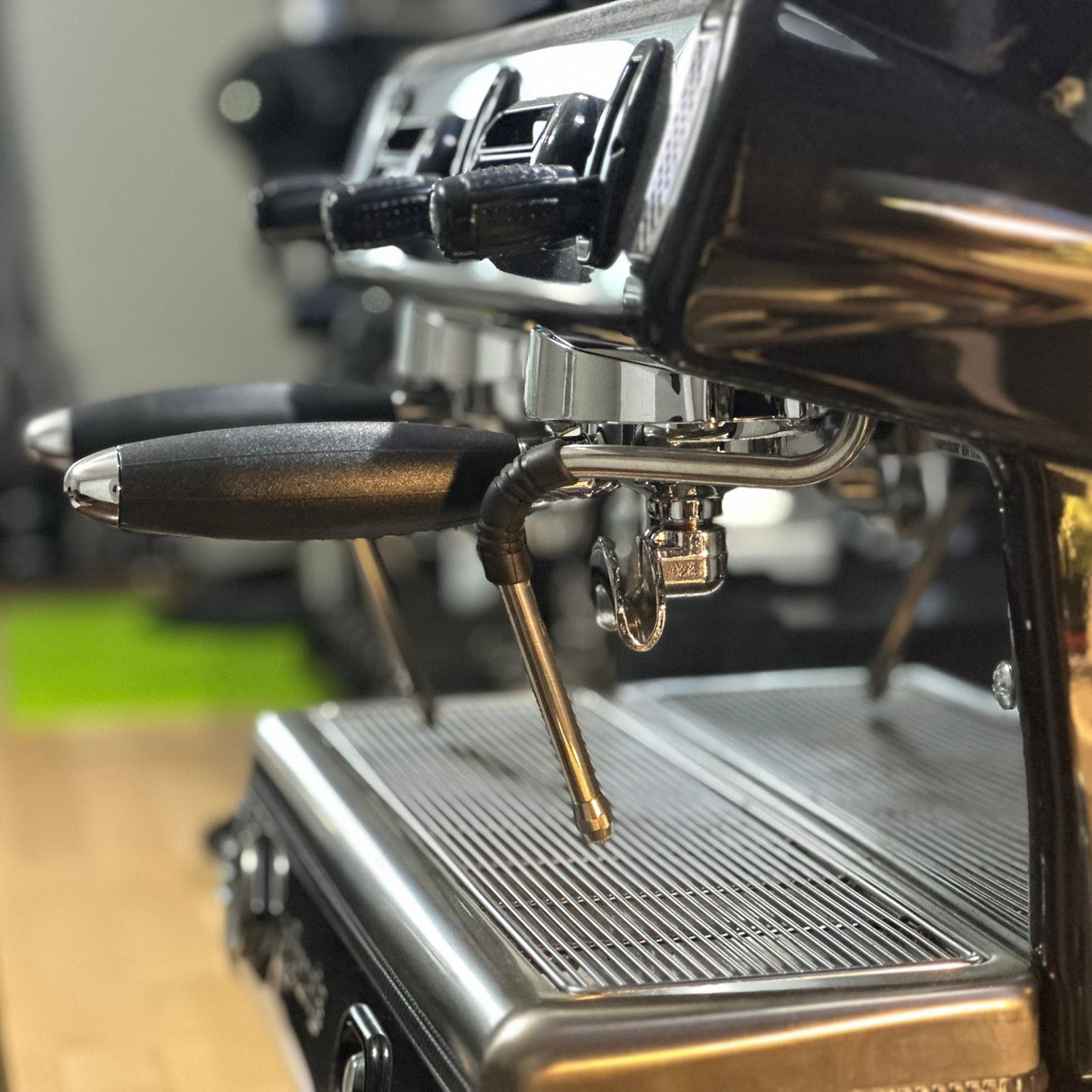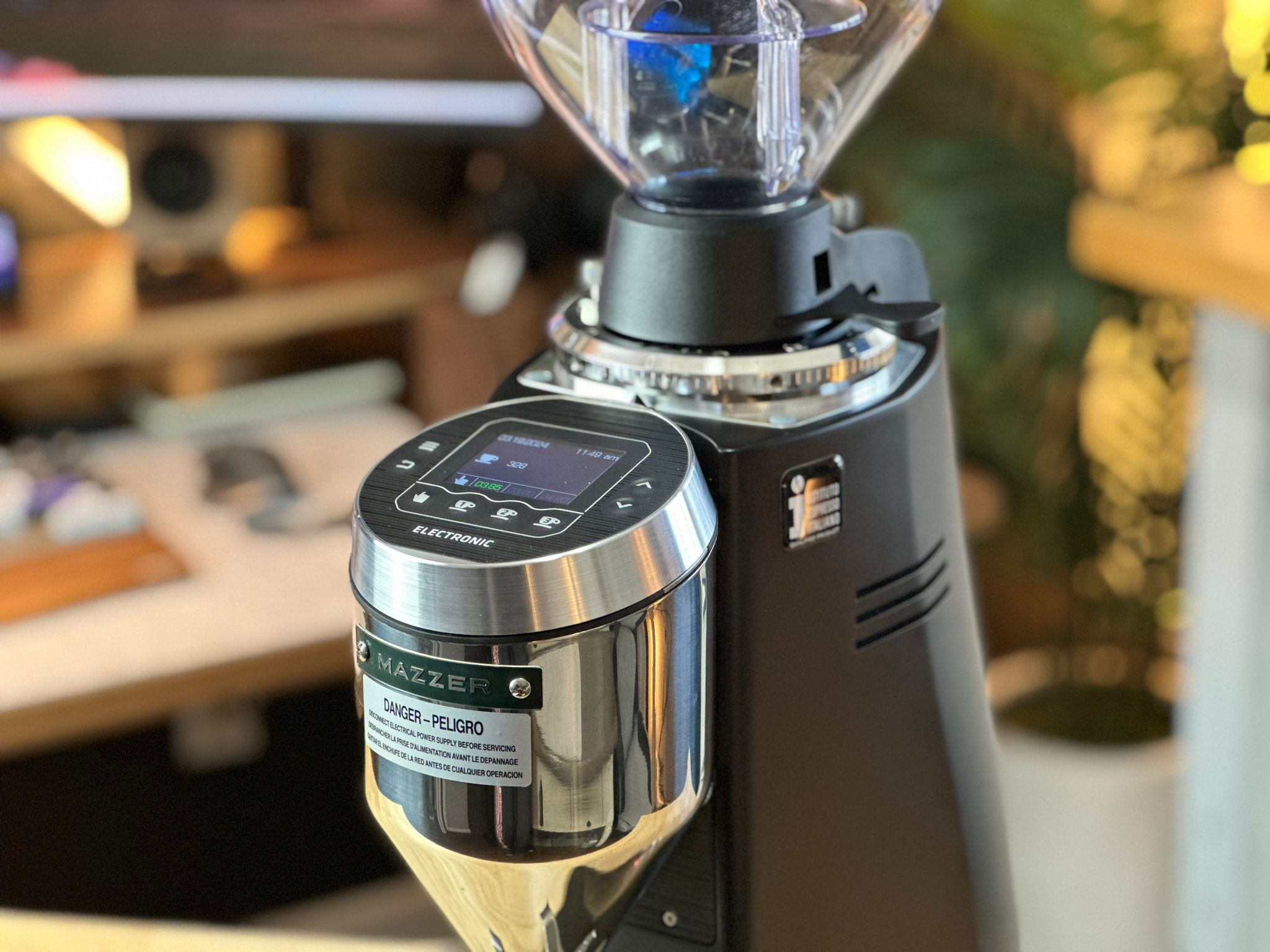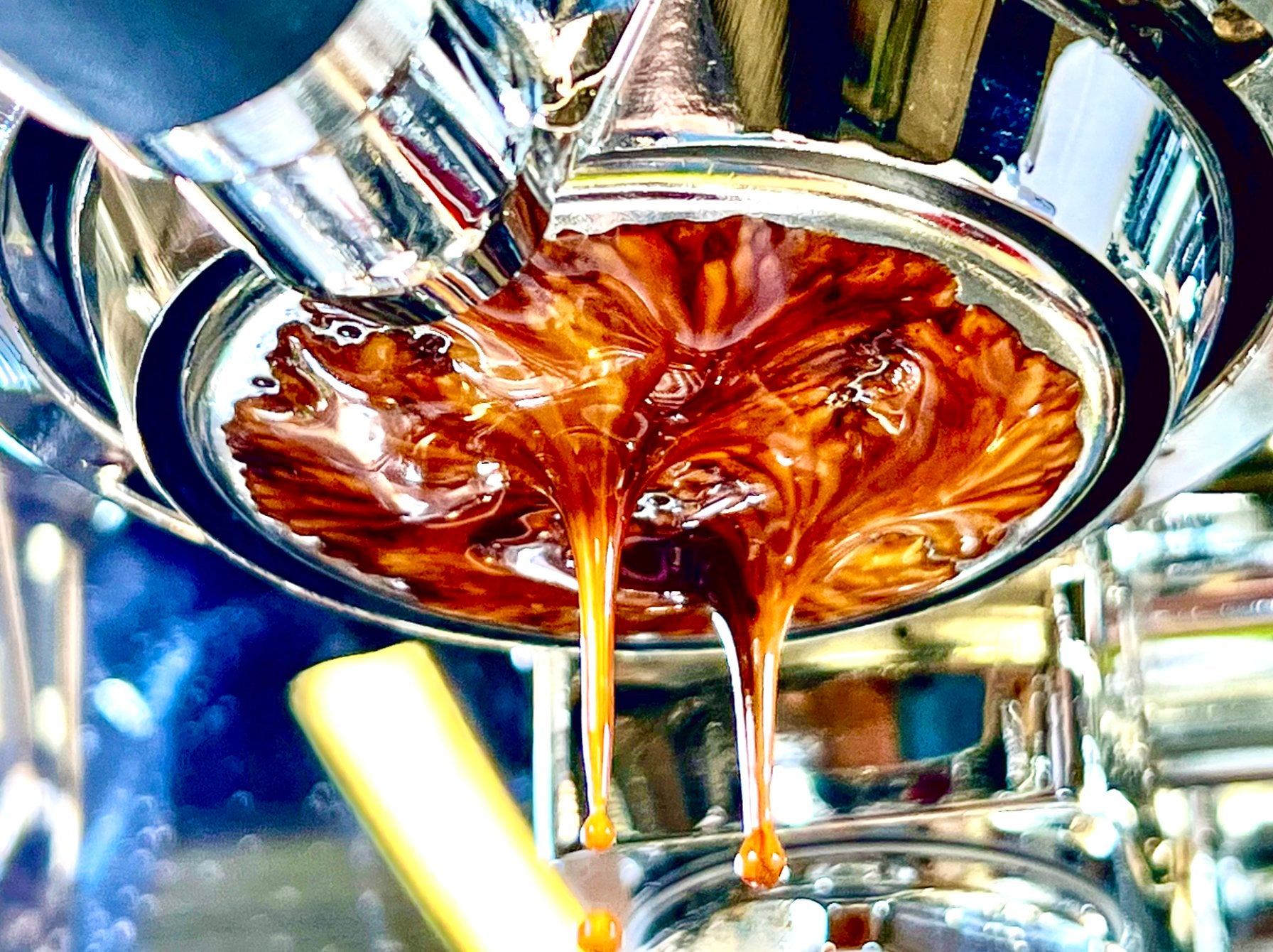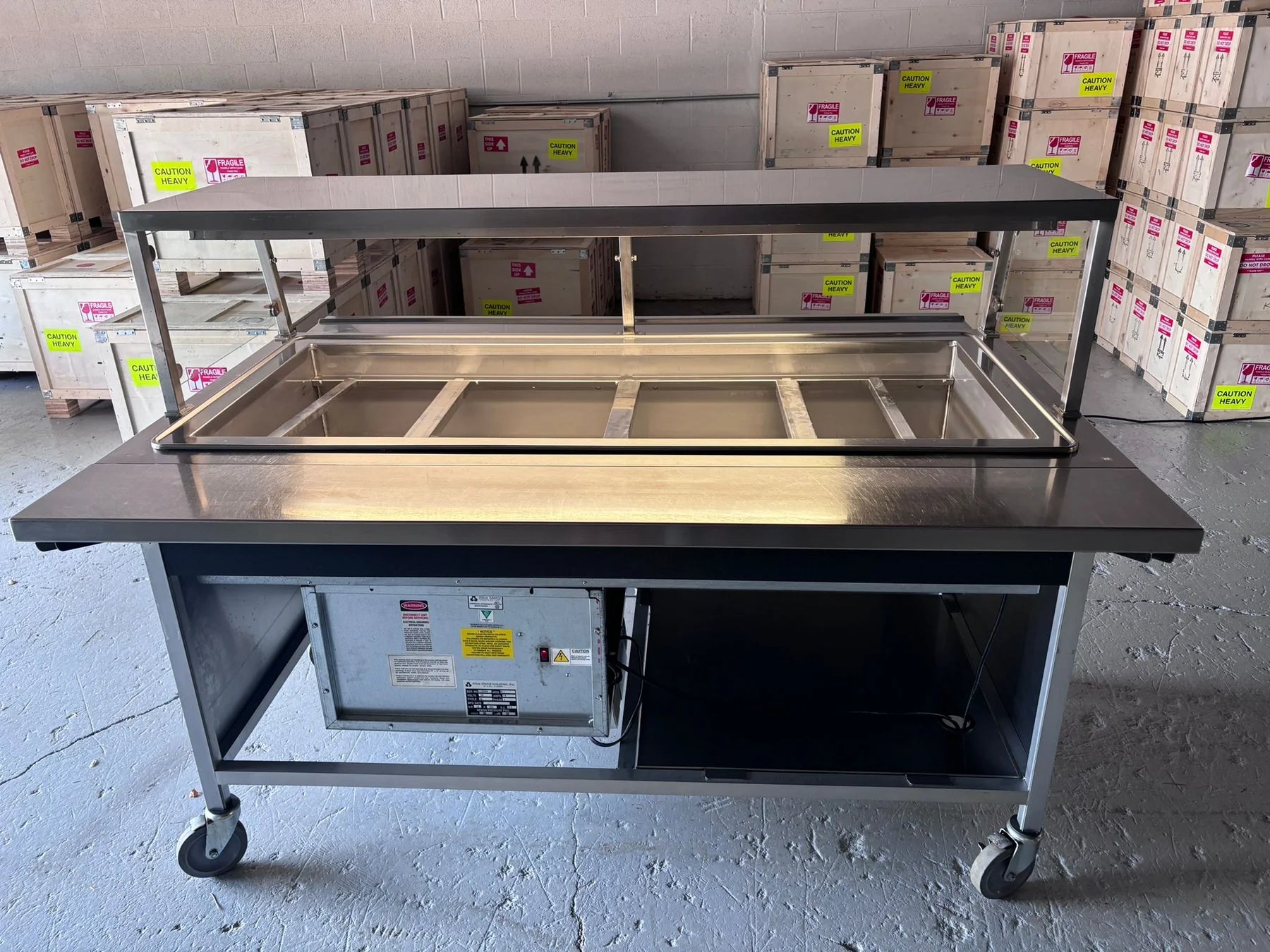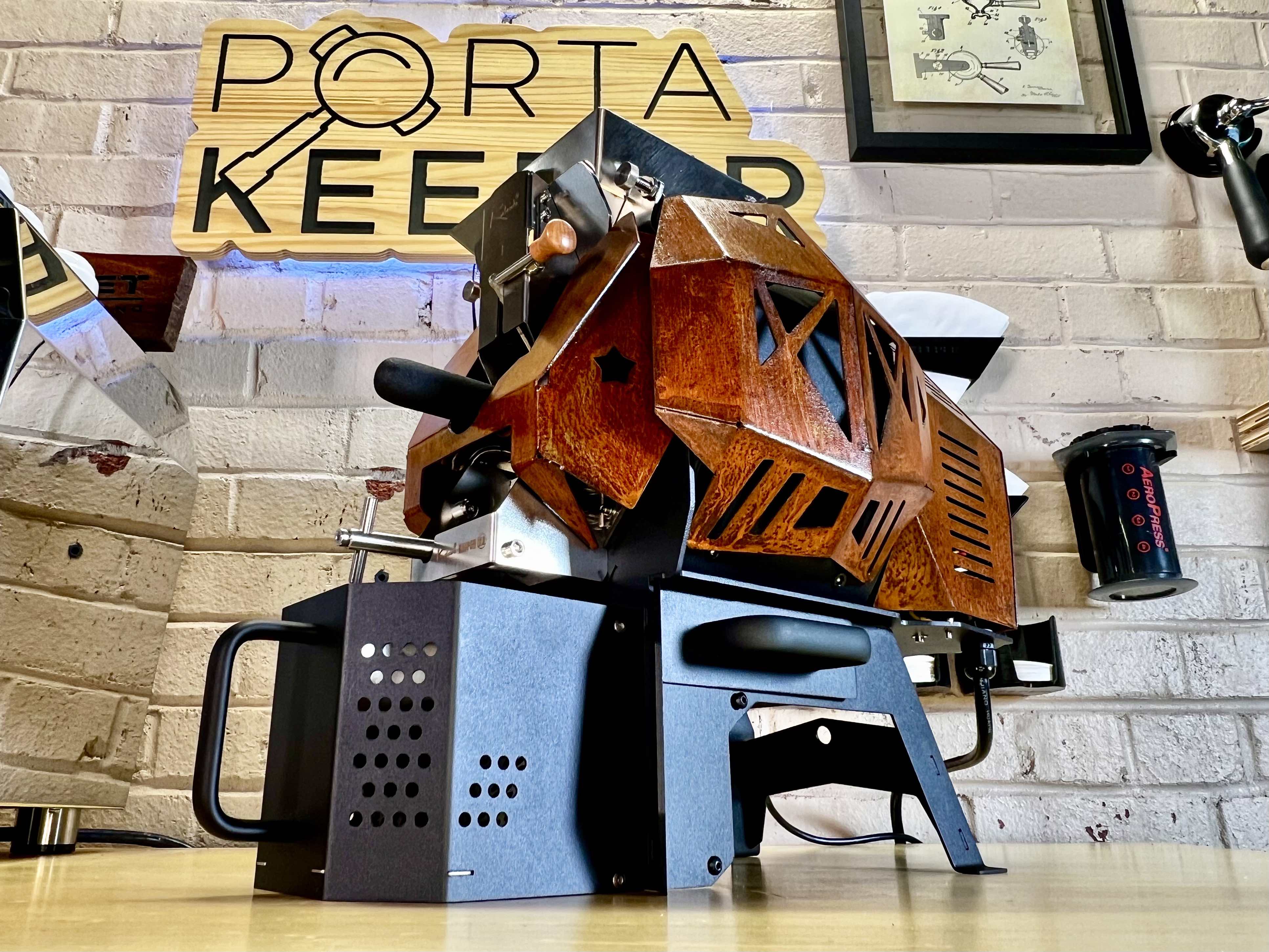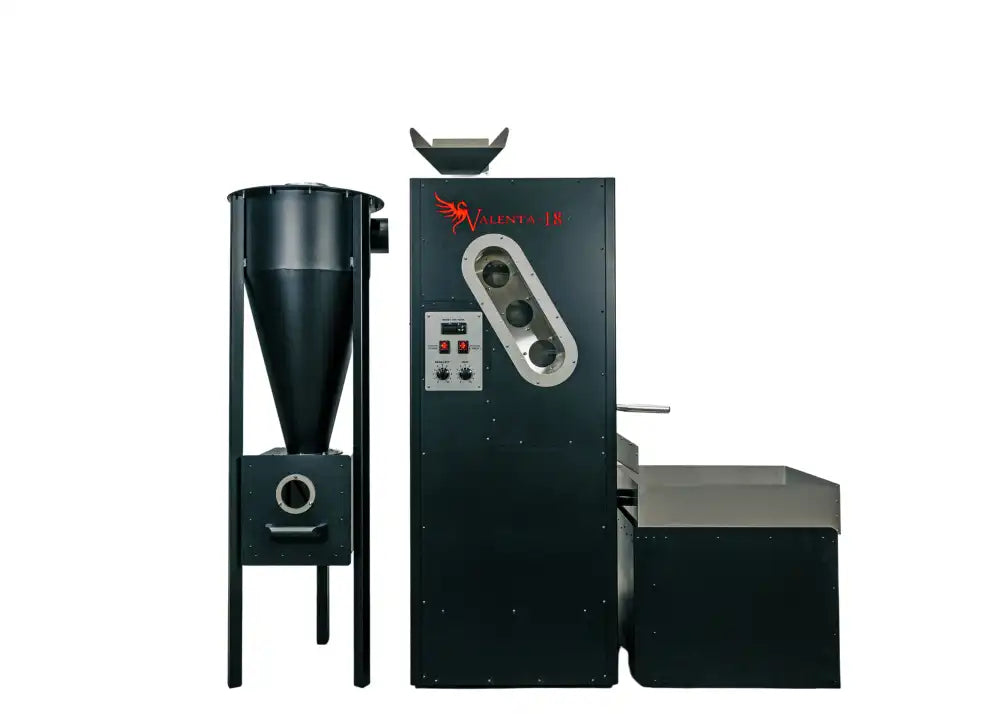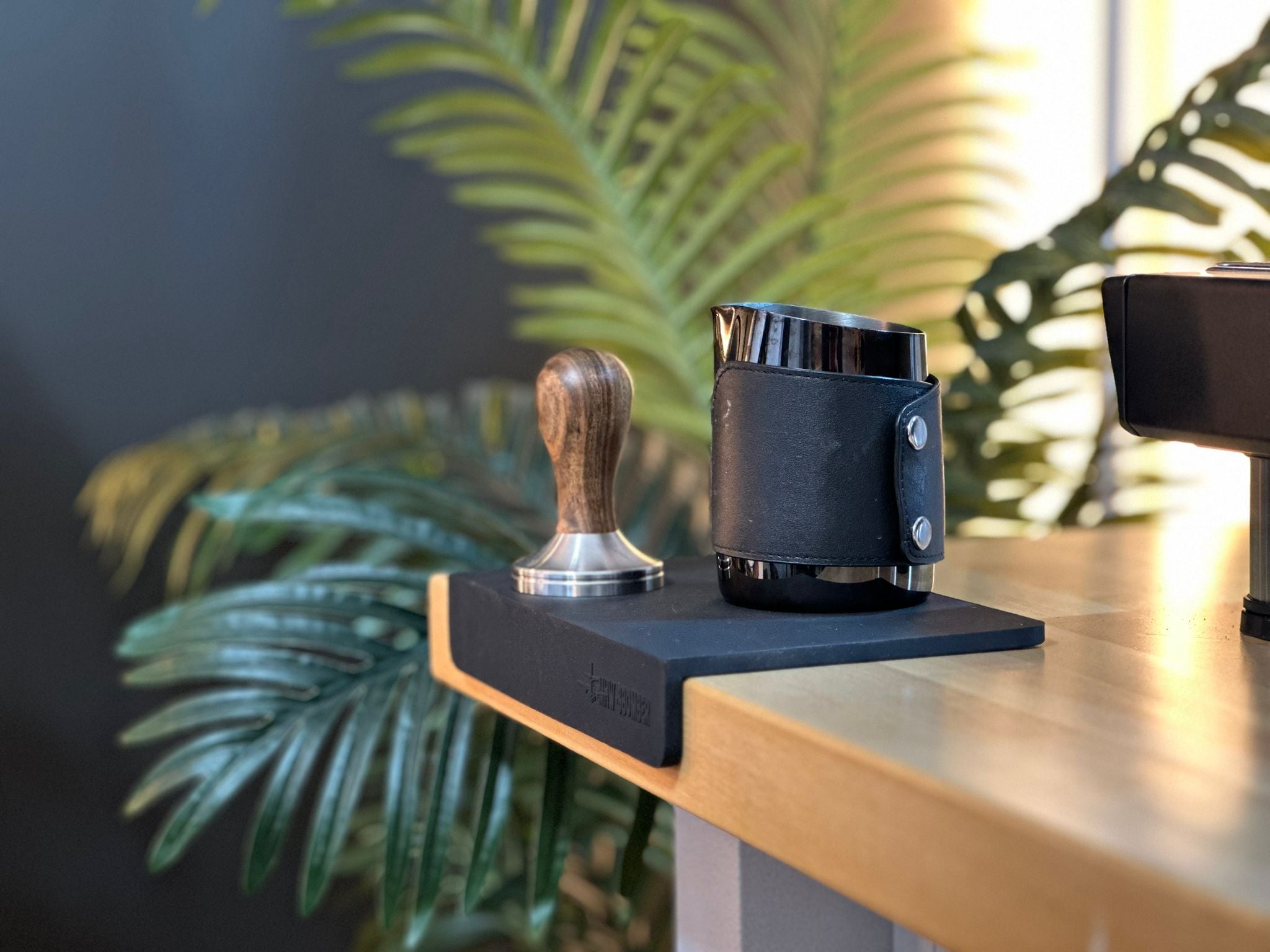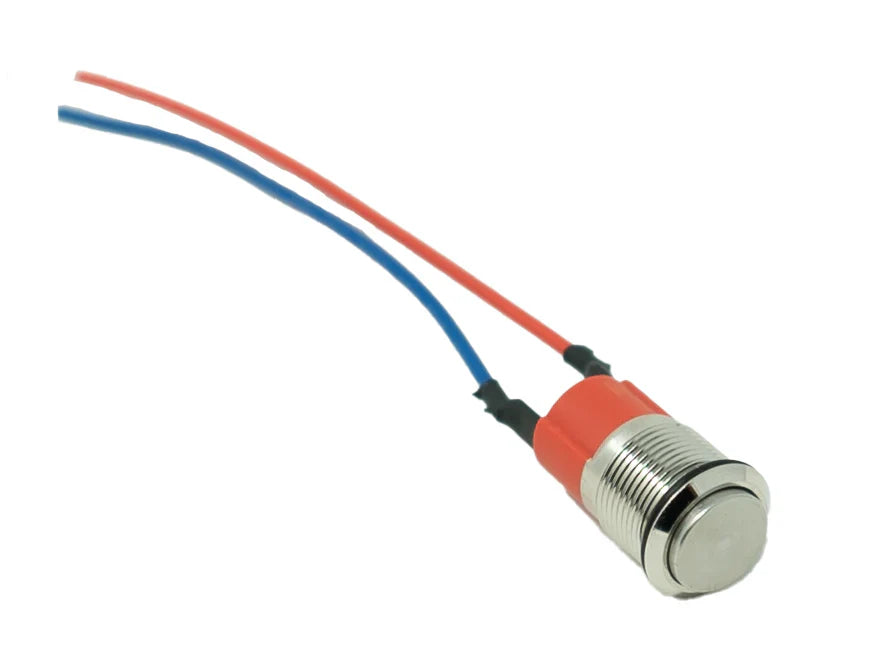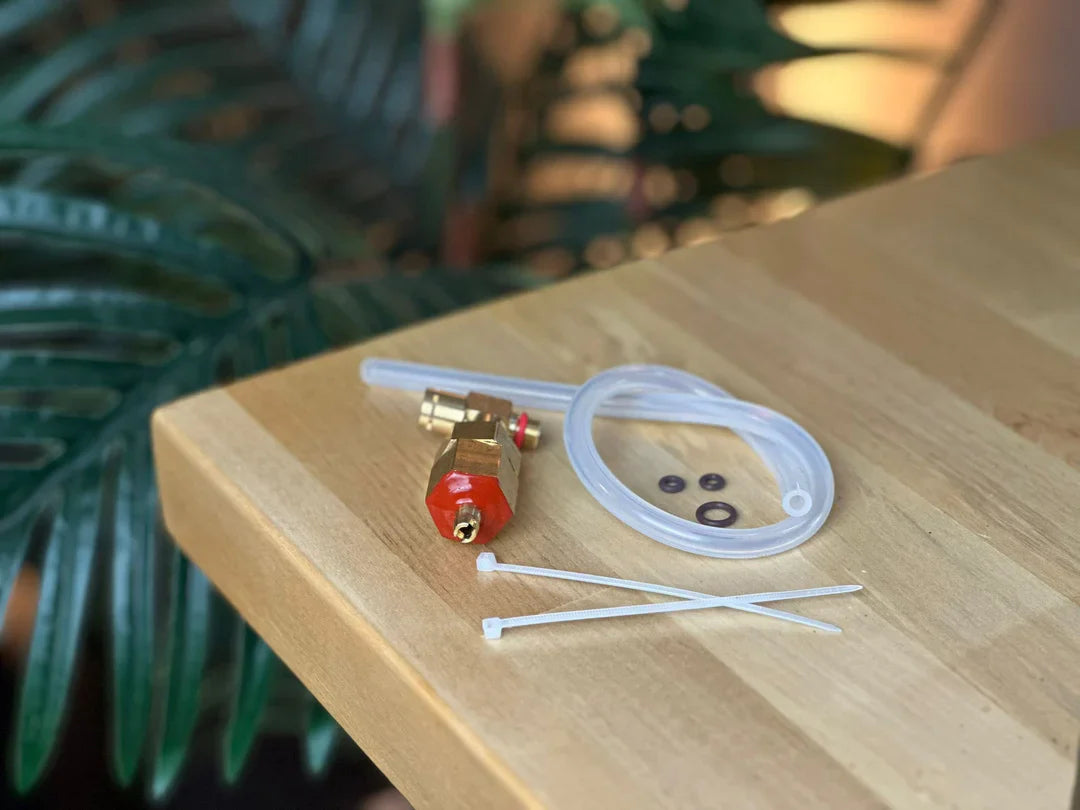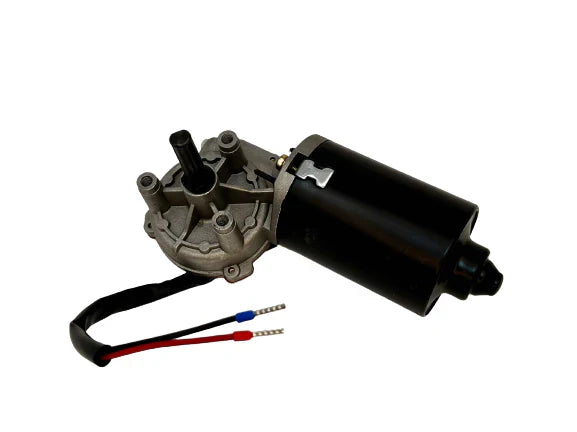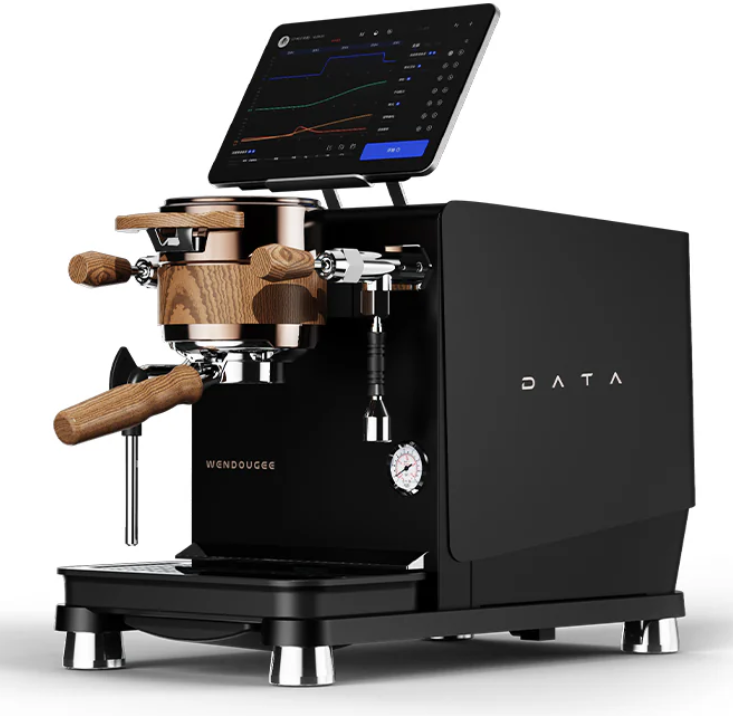Conical vs. Flat Burrs in Coffee Grinders: A Comprehensive Comparison
The burr type in a coffee grinder plays a significant role in the overall quality of the grind, flavor extraction, and brewing consistency. Conical burrs and flat burrs are the two most common types used in coffee grinders. Each has distinct differences in terms of grind quality, flavor impact, heat management, and suitability for different coffee brewing methods. Here’s a deep dive into how conical and flat burrs compare, along with the impact of burr size and how each type suits specific drinks.
Conical Burrs
Overview: Conical burrs consist of a cone-shaped inner burr and a ring-shaped outer burr. The beans are ground between these two surfaces. This type of burr design is widely used in both home and professional grinders due to its efficiency and versatility.
How Conical Burrs Affect Flavor:
- Complexity and Body: Conical burrs tend to produce a bimodal distribution of coffee particles—two dominant sizes: fines and larger particles. This combination can lead to a more complex, layered flavor profile, often with more body and richness. Some of the finer particles extract faster, contributing to sweetness and body, while the larger particles balance the flavor.
- Balanced Acidity: Conical burrs can highlight certain acidic notes in the coffee, making them well-suited for lighter roast coffees that emphasize fruity or bright flavors.
Grind Quality:
- Bimodal Distribution: Conical burrs typically produce a grind with a wider range of particle sizes. This can be beneficial for espresso as the small amount of fines helps increase body while maintaining an even extraction. However, for some brewing methods, this can lead to slightly uneven extraction.
- Less Heat Buildup: The conical shape promotes efficient grinding at slower rotational speeds, reducing the amount of heat generated during grinding. This preserves the delicate oils and aromas in the coffee.
Impact of Burr Size:
- Smaller Conical Burrs: Smaller burrs (e.g., 38-40mm) are typically found in home grinders. They offer a good balance of speed and grind consistency but may take longer to grind larger quantities of beans.
- Larger Conical Burrs: Larger burrs (e.g., 58-68mm) provide faster, more consistent grinding with better heat management. This is especially important for espresso grinding, where precision and consistency are key to producing high-quality shots.
Best for:
- Espresso: Conical burrs are excellent for espresso, providing the right balance of fine and larger particles to create body and complexity.
- Manual Brewing Methods: Conical burrs also work well for pour-over, French press, AeroPress, and drip coffee due to their ability to handle a wide range of grind sizes.
Pros:
- More forgiving grind adjustment: Easier to dial in different brew methods.
- Less heat generation: Preserves more coffee flavors and aromas.
- Less retention: Conical burr grinders tend to have less ground coffee retention between uses.
- Energy efficient: Conical burr grinders require less power to achieve consistent grinds.
Cons:
- Less precise grind for certain brewing methods: The bimodal grind distribution may be less suitable for brewing methods that require a very uniform grind (e.g., precision pour-over).
- Slightly more fines: While beneficial for espresso, too many fines can cause over-extraction in certain brewing methods like drip coffee or French press.
Flat Burrs
Overview: Flat burrs consist of two parallel burrs that grind coffee by pulling beans into the center and pushing them outward through the burr teeth. This design is common in commercial-grade grinders and high-end home grinders because it provides a highly precise and consistent grind.
How Flat Burrs Affect Flavor:
- Clarity and Clean Taste: Flat burrs produce a single-modal grind, meaning most particles are uniform in size. This leads to more even extraction, resulting in a cleaner, clearer flavor profile. The clarity and precision of flavor make flat burrs ideal for methods like pour-over and espresso.
- Less Body, More Brightness: Because flat burrs produce fewer fines, the flavor is typically cleaner and brighter, with more focus on the coffee's intrinsic flavor characteristics, particularly the acids. This can make some coffees taste "brighter" and less full-bodied.
Grind Quality:
- Single-Modal Distribution: Flat burrs are known for producing a highly consistent, uniform grind, which is crucial for precise brewing methods like espresso. Even extraction means more control over flavor nuances and reduced chances of bitterness from over-extraction or sourness from under-extraction.
- More Heat Buildup: Flat burr grinders, especially in smaller grinders, tend to generate more heat during grinding. If not properly managed, heat can degrade the quality of the coffee by prematurely releasing volatile oils and aromas.
Impact of Burr Size:
- Smaller Flat Burrs (58mm and below): Smaller flat burrs can still deliver high-quality, uniform grinds but may generate more heat during extended grinding sessions. They are well-suited for home espresso machines.
- Larger Flat Burrs (64mm and above): Larger flat burrs are commonly used in commercial grinders because they grind faster and more consistently, while also managing heat better. This results in superior grind consistency, making them ideal for high-end espresso setups.
Best for:
- Espresso: Flat burrs excel in espresso grinding due to their consistency in producing fine, uniform particles that allow for precise extraction. This is crucial for pulling consistent, high-quality shots.
- Pour-Over and Filter Coffee: Flat burrs are perfect for filter brewing methods (e.g., pour-over and drip coffee), where precision and clarity of flavor are essential.
Pros:
- Consistent grind size: Ideal for espresso and pour-over, where uniform particle size is critical.
- Cleaner, brighter flavor: Especially beneficial for lighter roasts and single-origin coffees.
- Higher speed: Flat burrs grind faster, particularly in larger grinders.
- More control over flavor extraction: Especially suited for precision brewing methods.
Cons:
- Higher heat generation: Flat burrs tend to produce more heat during grinding, which can affect flavor, especially in smaller grinders.
- Noisier: Flat burr grinders tend to operate at higher speeds, making them louder.
- More retention: Flat burrs can retain more grounds between uses, requiring more frequent cleaning to maintain consistency.
Comparison Table: Conical vs. Flat Burrs
| Feature | Conical Burrs | Flat Burrs |
|---|---|---|
| Grind Distribution | Bimodal (two predominant particle sizes) | Single-modal (consistent particle size) |
| Flavor Impact | Complex, more body, balanced sweetness | Clean, bright, clear flavor, emphasizes acidity |
| Fines Production | Fewer fines (less likely to over-extract) | Produces fewer fines but highly uniform particles |
| Heat Generation | Lower heat generation during grinding | Higher heat generation, especially in smaller grinders |
| Retention | Lower retention (fewer grounds left behind) | Higher retention (requires more frequent cleaning) |
| Ease of Adjustment | Easier to adjust for different brewing methods | Requires finer tuning for precision brewing |
| Grind Consistency | Good consistency for a variety of methods | Excellent consistency for espresso and pour-over |
| Noise | Quieter due to lower rotational speed | Louder, especially in high-speed grinders |
| Best For | Espresso, pour-over, French press, drip | Espresso, pour-over, filter coffee |
| Burr Size Impact | Larger burrs improve speed and consistency | Larger burrs improve consistency and manage heat |
| Price | Generally more affordable | Generally more expensive due to precision grinding |
Final Thoughts: Which One to Choose?
The choice between conical and flat burrs depends on your brewing preferences, budget, and the kind of flavors you want to emphasize in your coffee:
Choose Conical Burrs If:
- You enjoy a range of brewing methods (espresso, pour-over, French press) and want a grinder that can handle them all.
- You prefer a more forgiving grinder that doesn’t require constant adjustments.
- You want a grinder that’s quieter and more affordable, while still producing high-quality coffee.
- You prefer a coffee with more body and complexity, especially for espresso.
Choose Flat Burrs If:
- You’re focused on precision, especially for espresso and filter coffee.
- You want clarity and brightness in your coffee flavors.
- You are comfortable with higher-maintenance grinders that may require frequent cleaning and fine-tuning.
- You have a higher budget for a commercial or high-end home grinder that offers superior consistency.
Both conical and flat burr grinders can produce excellent coffee, but understanding the differences allows you to choose the one that aligns best with your brewing style and flavor preferences.


